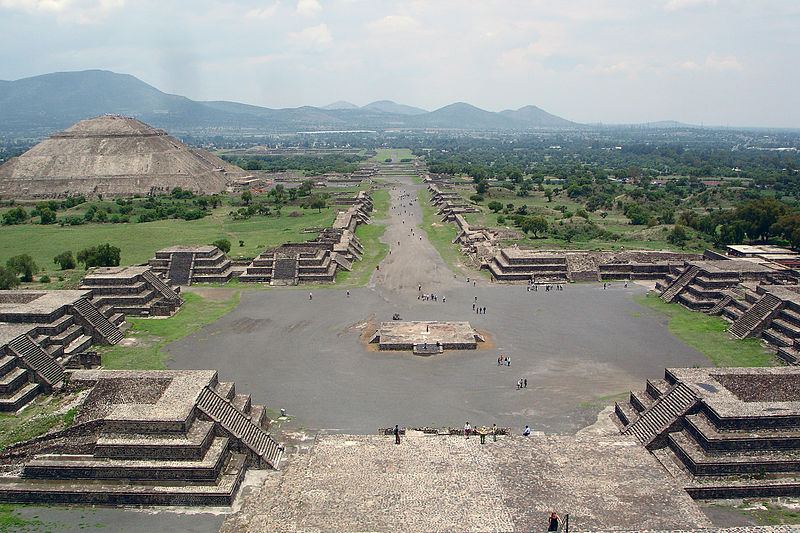The Palace of Fine Arts, located in the historic center of Mexico City, is home to the highest expression of the culture of the country, considered the most important opera house in Mexico and the largest center dedicated to the arts in all its manifestations. UNESCO declared an artistic monument in 1987.

The Monument to the Revolution is an architectural and a mausoleum dedicated to the commemoration of the Mexican Revolution . It is the work of Carlos Obregon Santacilia , who took the structure of the Hall of Lost Steps of the late Legislative Palace Émile Bénard to build the monument, completed in 1938 . Today is one of the most recognizable in Mexico City , and is part of a set consisting of the monument, the Republic Square and the National Museum of the Revolution.

Teotihuacan is an enormous archaeological site in the Basin of Mexico, 30 miles (48 km) northeast of Mexico City, containing some of the largest Mesoamerican pyramids built in the pre-Columbian Americas. The name means "where man met the gods." Apart from the pyramids, Teotihuacan is also known for its large residential complexes, the Avenue of the Dead, and numerous colorful, well-preserved murals. Additionally, Teotihuacan produced a thin orange pottery style that spread through Mesoamerica.

Cancún (Spanish pronunciation: [kaŋˈkun]) is a city in southeastern Mexico, located on the northeast coast of the Yucatán Peninsula in the Mexican state of Quintana Roo. It is a major world-renowned tourist destination, as well as being the seat of the municipality of Benito Juárez. The city is located off of the Caribbean Sea, and is one of the easternmost points in Mexico. Cancún is located just north of Mexico's Caribbean coast resort band known as the Riviera Maya.
